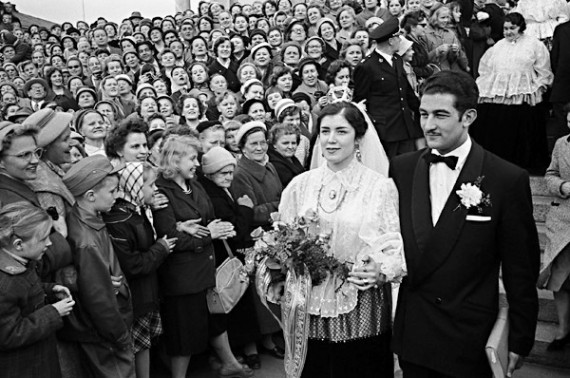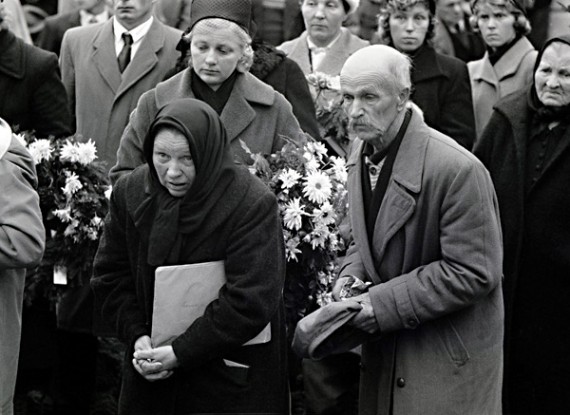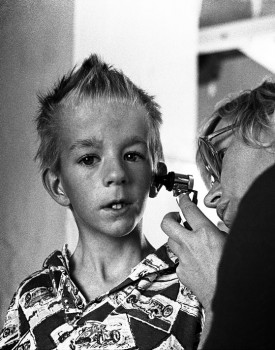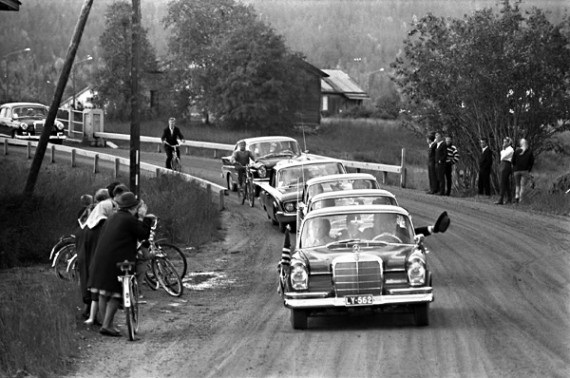Street-corner man
11 March 2010 | Extracts, Non-fiction
Photographs from Caj Bremer. Valokuvaaja / Photographer / Fotograf (Musta Taide, 2010; graphic design by Jorma Hinkka)
The period after the Second World War and before the age of television was the golden age of photojournals such as Life, Look and Paris Match. The big Finnish illustrated periodical was Viikkosanomat (‘The weekly news’); its early star, Caj Bremer, was one of the first Finnish press photographers to wander among people and record life as it was
‘Every photograph is the sum of aesthetic choices, and each one has a relationship with reality both when it is taken and in the time frame in which the viewer encounters it’, writes news editor and curator Riitta Raatikainen in her introduction to Caj Bremer. Valokuvaaja / Photographer / Fotograf.
Caj Bremer (born 1929) worked for years as a press photographer, most intensively between 1950 and 1970. A retrospective exhibition of his work over six decades opened at Helsinki’s Ateneum Art Museum in February (until 16 May).
Bremer’s photojournalistic scale is large; he has witnessed war and its victims, strikes and devastation, but he also has a sharp eye for important moments in ordinary people’s ordinary lives.
‘In post-war France, Henri Cartier-Bresson, Robert Doisneau and Willy Ronis became leading names in humanist photography. While philosophers withdrew to consider the issues of existentialism, photographers set out amidst the bustle of of life,’ writes Raatikainen. It was an idea whose time had come. The New York Museum of Modern Art’s 1955 exhibition, The Family of Man, in which worldwide photographs were grouped around common human themes such as love, children and death, is perhaps the most emblematic and well-known example of the approach. Meanwhile, in faraway Finland, Bremer’s project and exhibition entitled Everyday life in Finland (1972) recorded life that he knew was to disappear, in small villages yet untouched by modernisation.
Life ceased publication in 1972, Viikkosanomat in 1975. Reportage did not die, though. Caj Bremer has been influential in many ways in Finnish photography since, but perhaps his monochromatic view of the world of the 1950s is what lives on most vividly.
Self-evidently, the photographer likes people – he has a delicious sense of humour, too. In pictures taken at funerals or weddings, of fashion models, artists, presidents or children, in Finland or abroad, it’s the people that matter most.
The time frame in which we now view the faces Bremer has captured makes us marvel at how they, silently, speak volumes.

Curious crowds: a Roma family wedding, of Kalle Hagert and Tuula Saarto, at Helsinki Cathedral, 1959

Last rites: the funeral of 15 young people who died in a boating accident in Juuka, northern Karelia, 1959
Tags: photography
No comments for this entry yet
Trackbacks/Pingbacks:





25 May 2011 on 10:45 am
[…] propos de Caj Bremer, on trouvera une note biographique [ici] et [là], cette dernière note est illustrée de plusieurs photographies. Une page de la version finnoise […]